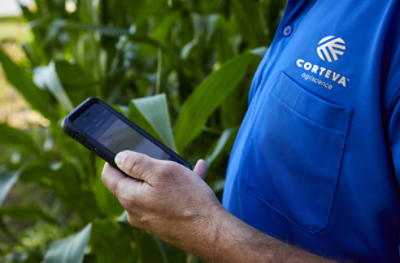Fungicides are the most effective answer to the threat; however, increased resistance to fungicide applications makes it important to understand this issue and discover ways to protect the efficacy of the products developed to mitigate fungal diseases.
Fungicide Resistance

Fungicide Resistance
Fungicides are essential to manage diseases in a variety of crops. Yet, certain species of fungi can develop a decreased sensitivity over time when exposed to the same chemicals repeatedly.
Overview
Fungicide resistance is an increasing problem in high-value crops, representing one of the most important challenges in disease control and causing increased management costs and decreased marketable yield. Detecting resistance and finding ways to solve the problem have become critical to optimizing resources and protecting growers’ bottom lines.
According to the Fungicide Resistance Action Committee (FRAC), fungicide resistance “refers to an acquired, heritable reduction in sensitivity of a fungus to a specific anti-fungal agent (fungicide).”
Fungicide resistance continues to be an issue for growers and consultants. Understanding the key elements of fungicide resistance will help extend the use of available chemistries and provide peace of mind when disease occurs.
Impact of Fungicide Resistance
The impact of fungicide resistance varies based on several factors, including severity of the disease, loss of crop and cost of switching to a new, higher-priced fungicide. Today, reports indicate growers lose 10% to 23% of crops preharvest, despite fungicide application.1 An additional 10% to 20% are lost postharvest.1
Causes of Fungicide Resistance
Fungicide resistance was initially discovered in sugarbeet fields in Greece in 1972.2 After three years of using a fungicide to control Cercospora beticola, catastrophic disease levels were found.
The biggest culprit of fungicide resistance is the repeated use of a single mode of action (MOA) to control diseases. Growers and consultants have learned from these experiences and encourage the use of multiple MOA. However, it’s about not only the number of MOA but also the effectiveness of the MOA. When selecting a fungicide, growers and consultants should confirm the product chosen provides the preventive and curative control needed for a successful application.
Taking proactive steps, including the use of multiple, effective MOA, can be key to keeping fungicide resistance at bay, Unfortunately, fungicide resistance generally is not determined until after a disease has been identified. When the application results don’t meet expectations, steps may be taken to determine if resistance is the cause.
Ways to Proactively Manage Fungicide Resistance
Growers and their advisers must take fungicide resistance management into consideration for each crop and field/orchard. Ways to proactively manage fungicide resistance include:
- Rotating products and FRAC groups, ensuring a different mode of action is used
- Scouting orchards daily for signs of disease development
- Implementing integrated disease management strategies
- Applying the recommended label rates with adequate coverage
- Applying fungicides preventively — prior to disease development
- Selecting varieties that possess defensive traits to diseases most common to high-value crops
- Talking with neigbors about fungicides used near diseased fields and if the fungicides were effective
- Staying informed of fungicide resistance in your area, which diseases show signs of resistance and to which modes of action
Impacted Crops
When what has always worked stops working, you might be facing fungicide resistance, which can impact the yield and quality of many high-value crops.

Get the Latest Insights in Your Inbox
Subscribe to receive timely agronomic, crop protection and product insights customized to your needs.
Sign Up Now1Steinberg, G., and S. J. Gurr. 2020. Fungi, fungicide discovery and global food security. https://doi.org/10.1016/j.fgb.2020.103476
2Oliver, R. 2023. How pathogens develop resistance to fungicides: an overview, p. 4. In F. J. Lopez-Ruiz (ed.), Understanding and minimising fungicide resistance. Burleigh Dodds Science Publishing, Cambridge, UK.